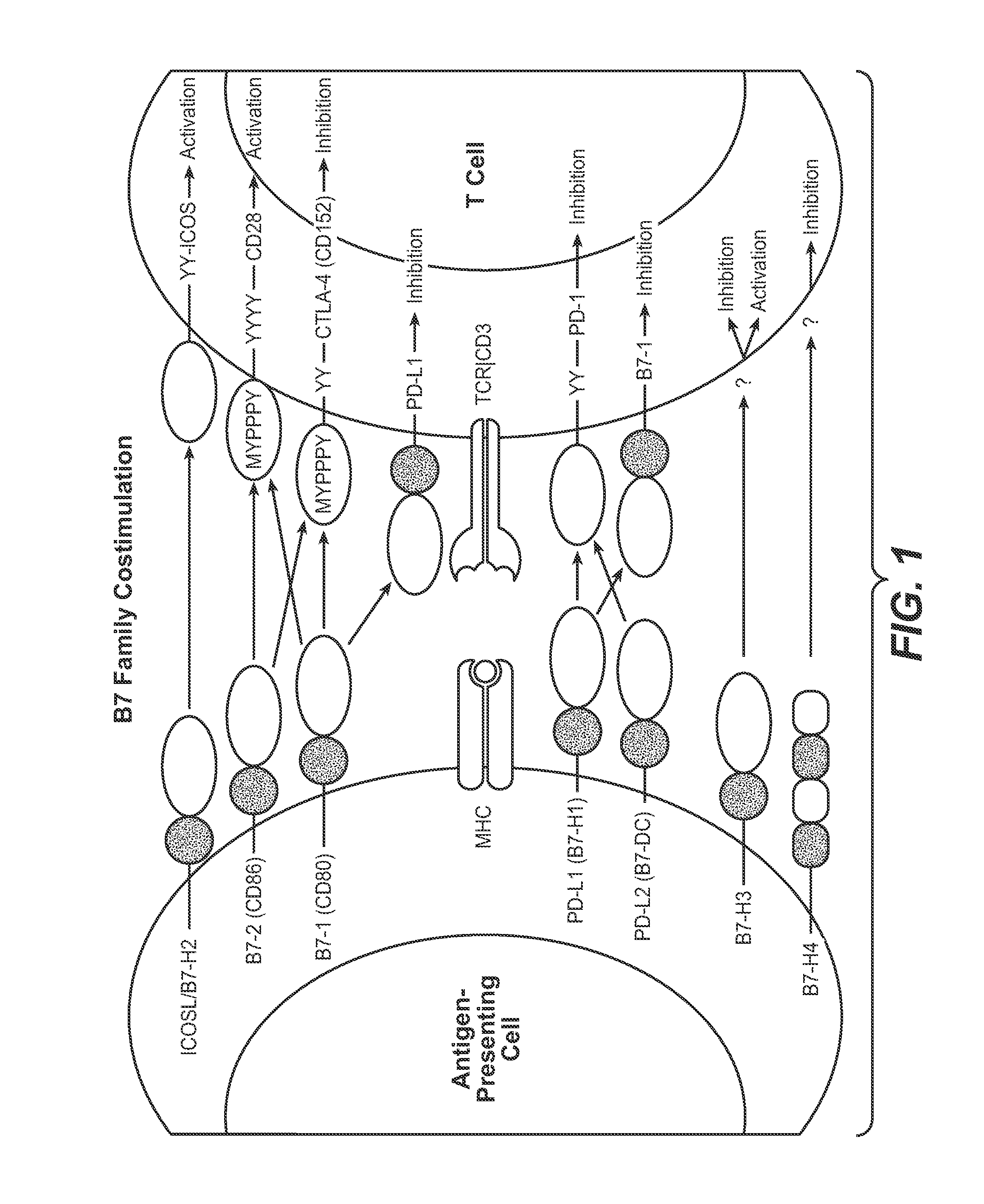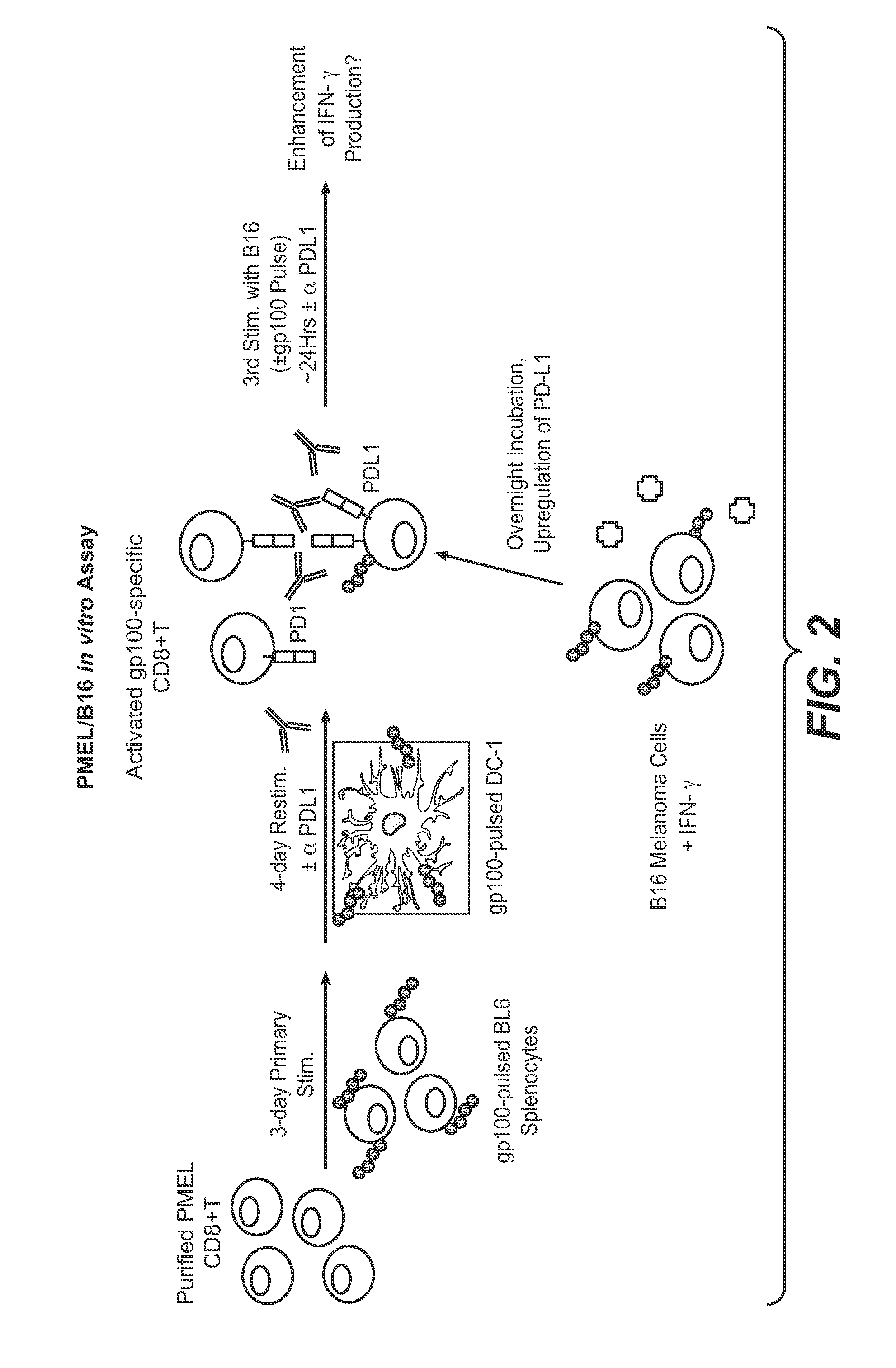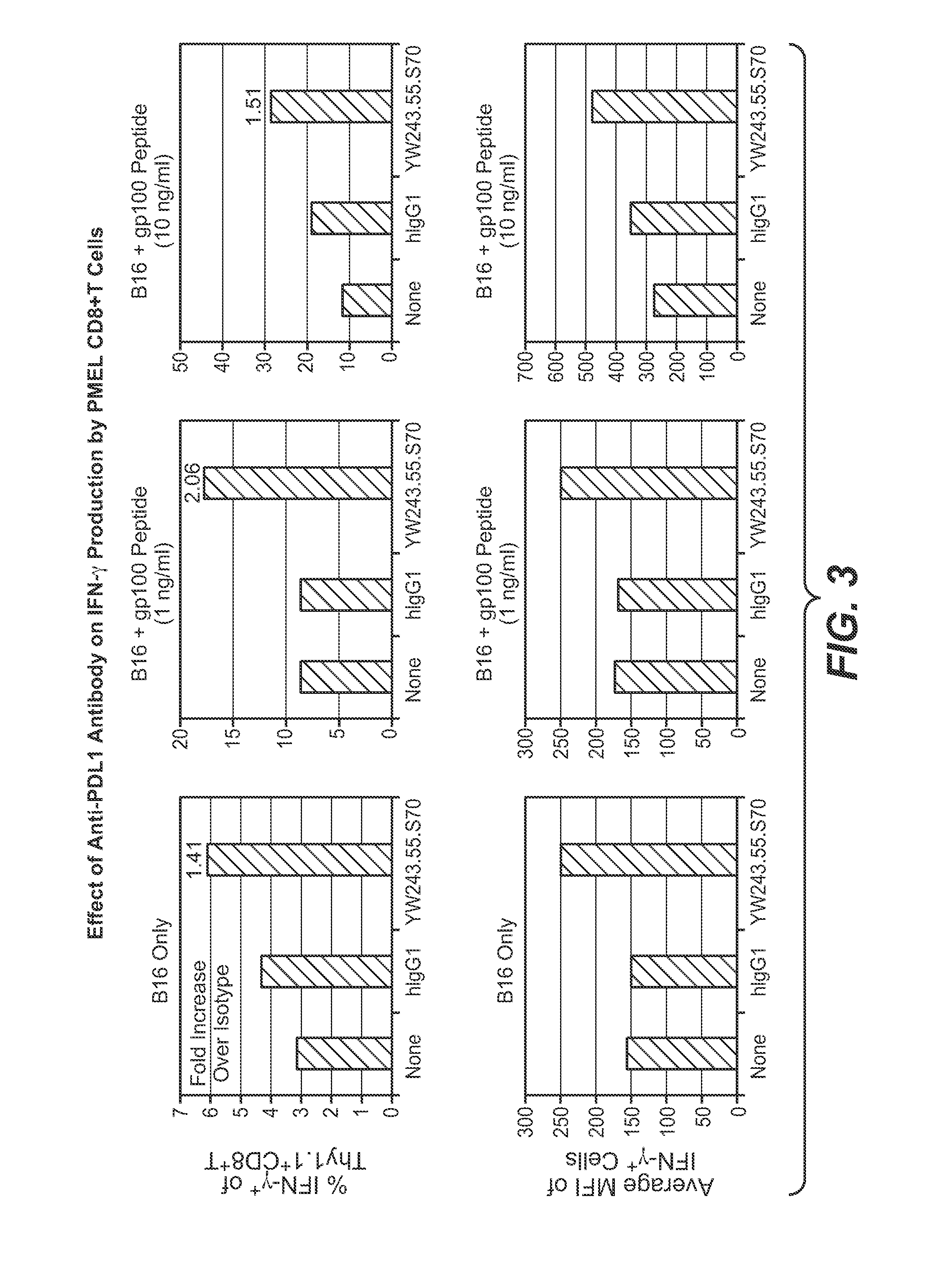Methods of using Anti-pd-l1 antibodies and their use to enhance t-cell function to treat tumor immunity
a technology of t-cell function and anti-pd-l1 antibody, which is applied in the field of immunomodulatory function can solve the problems of significant unmet medical needs, refractory, exhaustion or tolerance to foreign antigens, etc., and achieve the effect of upregulating cell-mediated immune responses and enhancing t-cell function
- Summary
- Abstract
- Description
- Claims
- Application Information
AI Technical Summary
Benefits of technology
Problems solved by technology
Method used
Image
Examples
example 1
Identification of Anti-PD-L1 Antibodies in Phage Libraries
Library Sorting and Screening to Identify Anti-PD-L1 Antibodies
[0541]Human (R&D Systems, cat#156-B7) and murine (R&D Systems, cat#1019-B7) PD-L1-Fc fusions were used as antigens for alternate library sorting. Specifically, phage libraries were sorted first against human antigen, followed by murine, human, and murine antigen in the subsequent three rounds. Nunc 96 well Maxisorp® immunoplates were coated overnight at 4° C. with target antigen (10 μg / ml) and were blocked for 1 hour at room temperature with phage blocking buffer PBST (phosphate-buffered saline (PBS) and 1% (w / v) bovine serum albumin (BSA) and 0.05% (v / v) tween-20). Antibody phage libraries VH (see, e.g., Lee et al., J. Immunol. Meth. 284:119-132, 2004) and VH / VL (see Liang et al., J. Mol. Biol. 366: 815-829, 2007) were added to antigen plates separately and incubated overnight at room temperature. The following day antigen-coated plates were washed ten times with...
example 2
Characterization of Anti-PD-L1 Antibodies (BIAcore)
[0557]Binding affinities of anti-PD-L1 phage antibodies YW243.55 and YW243.55S70 against recombinant human and mouse PD-L1 were measured by surface plasmon resonance (SRP) using a BIAcorem™-3000 instrument. Recombinant human PD-L1-Fc (R&D Systems, cat #156-B7) and recombinant mouse PD-L1-Fc (R&D Systems, cat#1019-B7) were directly coated on CM5 biosensor chips to achieve approximately 500 response units (RU). For kinetics measurements, two-fold serial dilutions (3.9 nm to 500 nm) were injected in PBT buffer (PBS with 0.05% Tween-20) at 25° C. with a flow rate of 30 μL / min. Association rates (kon) and dissociation rate (koff) were calculated using a simple one-to-one Languir binding model (BIAcore Evaluation Software version 3.2). The equilibrium dissociation constant (kD) was calculated as the ratio koff / kon.
[0558]The binding affinities of anti-PD-L1 phage antibody clones YW243.55 and YW243.55.570 measured are reported below in Tabl...
example 3a
Specificity of Anti-PD-L1 Abs for Human, Rhesus and Mouse PD-L1—FACS and Radioligand Cell Binding Assay)
[0559]This example shows the specificity for the anti-PD-L1 antibody of the invention for human, rhesus and mouse PD-L1. In addition, it shows the affinity of the Ab for mouse and human PD-L1 expressed at the cell membrane on 293-transfected cells.
[0560]Human and mouse PD-L1 were stably transfected into 293 cells. Cells were harvested and plated at 150,000 cells per well in a 96-well plate for binding studies.
[0561]Rhesus blood was obtained from Southwest Foundation for Biomedical Research (San Antonio, Tex.). Blood was diluted with an equal volume of PBS and overlayed on 96% Ficoll-Paque (GE Healthcare) for separation of mononuclear cells. Mononuclear cells were lysed of red blood cells using erythrocyte lysis buffer (Qiagen) and cultured overnight at 1.5×106 cells / ml with 5 ng / ml PMA plus 1 μM ionomycin in 6-well plates. Culture media was RPMI 1640 with 10% fetal bovine serum, 2...
PUM
 Login to View More
Login to View More Abstract
Description
Claims
Application Information
 Login to View More
Login to View More - R&D
- Intellectual Property
- Life Sciences
- Materials
- Tech Scout
- Unparalleled Data Quality
- Higher Quality Content
- 60% Fewer Hallucinations
Browse by: Latest US Patents, China's latest patents, Technical Efficacy Thesaurus, Application Domain, Technology Topic, Popular Technical Reports.
© 2025 PatSnap. All rights reserved.Legal|Privacy policy|Modern Slavery Act Transparency Statement|Sitemap|About US| Contact US: help@patsnap.com



